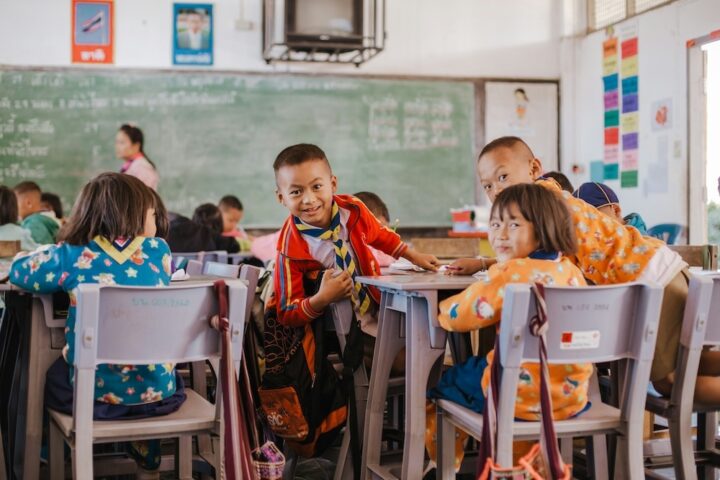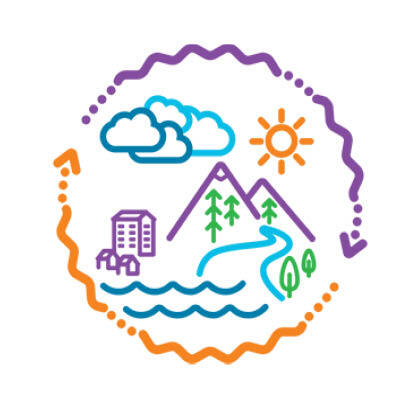Elevating the cultural wealth of multilingual students, families, and communities in climate justice education

Climate Migrant & Refugee Students should feel that their climate experiences are central to learning and be positioned as experts with unique stories, language, and solutions to share on their own terms.
Educators & PD Providers should build reciprocal relationships with diverse students and families—elevating migrant and refugees’ nuanced climate stories.
Curriculum Developers should build units adaptable to place and to students. Balance a focus on climate change mechanisms and problems with a critical liberatory presencing of solutions.
What Is The Issue?
As the number of multilingual learners grows in the coming decades, it is crucial that educators elevate their and their communities’ climate experiences and expertise—which may be connected with climate migration or environmental displacement—in learning experiences. Unfortunately, multilingualism and language education remain on the margins of most formal education settings and are rarely considered a climate solution. Including these knowledges can foster belonging, make visible learners’ unique intersectional identities as climate refugees, and propagate climate solidarity and collaboration across geographies.
Authors:
BY SARASWATI NOEL, KELSIE FOWLER, RENEÉ SHANK, CRISTINA BETANCOURT & TEDDI BEAM-CONROY; EDITED BY PHILIP BELL | NOVEMBER 2024
Reflection Questions
- What assumptions do I have about my students and their families and the effect of climate and environmental disruption on their lives? What are some responsive and respectful ways I can clarify/disrupt those assumptions?
- Whose stories and expertise are missing in my classroom as I teach about climate justice? What resources exist that elicit and speak to their perspectives?
- What are curricular/teaching shifts I need to make to elevate multilingual students/families’ expertise in my classroom?
Things To Consider
- Linguistic justice is an underrepresented and undertheorized dimension of climate justice, despite language allowing us to communicate across problems, histories, resources, and to share and collaboratively develop solutions. Unfortunately, ongoing settler colonialism and globalization have constrained the language of climate change to English and a few other colonial, dominant languages—locking many people out of climate learning, conversations, and responses.
- Only now is the climate change community starting to recognize how inclusive language approaches—translanguaging, multilingual education, and participatory learning—can disrupt linguistic barriers and effectively support learners in understanding the climate crisis and solutions.
- Multilingual learners often possess first-hand experiences and knowledge of climate change–either as a climate refugee or as a member of a migrant community whose outdoor labor makes them highly impacted and/or knowledgeable by climate changes. Shifting educational practices to recognize, elevate, and embrace their community cultural wealth (Yosso, 2005)—particularly linguistic, navigational, and social capital (or funds of knowledge)—is a necessary step toward climate justice. These powerful forms of capital mean that youth and their communities can cross or mix language vernaculars to expand or deepen conversations on climate justice beyond English-speaking communities.
Attending to Equity
- Within multigenerational ancestral inhabitants and Indigenous communities, linguistic capital also supports the oral histories that document climate change in that place over time and the impact it has had on the communities there. When capital is shared across languages, cultures, and places, bearing witness can foster deep climate solidarity and offer wisdom about responding to the crisis.
- Multilingual learners are already adept at navigating this climate impacted world and related structures and systems across varied geographies that are central to climate justice (e.g., housing, school, health, and transportation), and therefore hold unique expertise and perspectives for (re)designing systems to build toward more just future.
Recommended Actions You Can Take
- Design intersectional environmental activities for students to explore and share their knowledge and questions related to migration, displacement, or climate change. Consider using prompts like “What does this remind you of from outside of school?”, “How has climate change touched your life?”, “Why did your family/ancestors migrate?” Draw on these answers to shift entire units or adapt lessons (e.g., an immigration unit can focus on climate migration or family noticing of phenological changes). Learn how to support students in connecting to one another’s stories. Also, leverage critical speculative design pedagogies that cultivate future-oriented, climate-conscious solutions that center the needs, stories, and expertise of multilingual learners.
- Foster self-determination, dignity, and critical liberatory presencing by discussing media (news and magazine articles, books, videos, oral history databases, images, social media posts, case story vignettes) representing diverse languages, heritage countries, migration accounts, climate impacts and solutions, and stories of global climate leadership.
- Connect with multilingual families or local refugee organizations and generate a sense of belonging and expertise (e.g., send a beginning-of-unit letter that invites them to come and share their experience with climate change or share words in their language related to climate).
ALSO SEE STEM TEACHING TOOLS
STEM Teaching Tools content copyright 2014-22 UW Institute for Science + Math Education. All rights reserved.
This site is primarily funded by the National Science Foundation (NSF) through Award #1920249 (previously through Awards #1238253 and #1854059). Opinions expressed are not those of any funding agency.
Work is licensed under a Creative Commons Attribution-ShareAlike 4.0 Unported License. Others may adapt with attribution. Funded by the National Science Foundation (NSF). Opinions expressed are not those of any funding agency.


 Email Feedback
Email Feedback


